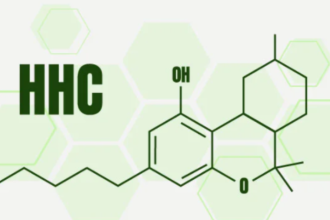A restless flock. Ragged feathers. Fewer eggs in the nest. These might seem like small signs—but they often point to a bigger issue: protein deficiency. Protein for chickens is vital not just for strength but for structure—for building feathers, muscles, and even the energy behind every egg. When chicken feed with high protein is absent, their bodies shift into survival mode, and the results can be surprisingly visible.
Why Protein Matters for Chickens
Protein for chickens drives every critical function in a chicken’s life. Protein for hens supports egg formation, shell strength, and energy. It also fuels foraging, dust-bathing, and social behaviors.
1. The Role of Protein for Chickens
Growth & Development: Chicks and broilers rely heavily on protein to build muscle, bones, and tissues. Without it, growth stalls, leaving young birds undersized and weak.
Feather Formation: Feathers are 90% keratin[1]—a protein. Insufficient intake leads to brittle, patchy plumage or delayed molting.
Egg Production: Hens require protein to form egg whites (albumen) and strong shells. Deficiencies result in fewer eggs, thin shells, or erratic laying cycles.
Immune Function: Antibodies and enzymes are protein-based. Low protein weakens disease resistance, leaving flocks prone to infections.
Vitality: Protein fuels energy for foraging, dust-bathing, and social behaviors. Depleted reserves lead to lethargy or unnatural inactivity.
2. Protein & Essential Amino Acids: The Building Blocks
Chickens need 22 amino acids to thrive, but 10 are essential(like methionine and lysine) that their bodies can’t produce[2]. These must come from feed. A diet lacking even one amino acid disrupts protein synthesis, much like a puzzle missing a piece. High-quality poultry feeds balance these acids to support everything from feather structure to metabolic processes.
3. Signs Your Chickens Need More Protein
Common signs of inadequate protein for chickens include:
Stunted Growth: Chicks lagging behind peers or broilers failing to gain weight.
Ragged Feathers: Bald spots, slow regrowth after molting, or dull, frayed plumage.
Egg Issues: Fewer eggs, thin shells, or irregular laying patterns.
Low Energy: Birds that seem listless, avoid movement, or huddle excessively.
Unusual Behavior: Feather pecking, cannibalism, or increased aggression as stressed birds seek nutrients.
How Much Protein Do Chickens Need?
Protein requirements aren’t one-size-fits-all; they shift dramatically depending on a chicken’s age, purpose, and breed. Tailoring their diet to these needs ensures optimal health and productivity.
1. Protein Requirements by Life Stage
Chicks (0-4 weeks): Rapid growth demands 20-22% protein in starter feed. This fuels muscle, bone, and organ development during their critical early weeks.
Pullets (4-8 weeks): As juveniles, protein drops to 18-20% to avoid overstimulating egg production too early. Focus shifts to steady maturation[3].
Laying Hens: Mature hens need 16–18% protein to sustain egg production. Demand spikes during molting or peak laying seasons.
Broilers: Bred for fast growth, broilers thrive on 20-24% protein diets until processing. This maximizes muscle development and weight gain[4].
2. Balancing Protein with Energy & Nutrients
Protein doesn’t work alone. Diets must balance it with the following:
Energy sources to prevent protein from being burned as fuel.
Vitamins and minerals to support metabolism and eggshell formation.
Amino acids like methionine and lysine, which are often limited in plant-based feeds.
Overloading protein can strain kidneys, while underfeeding stunts growth or reduces egg output. Therefore, a balanced chicken protein supplement is crucial.
Common Protein Sources for Chickens
Poultry diets use varied protein sources to balance cost and nutrition:
Animal-Based: Fish meal (high in amino acids/omega-3s) risks egg flavor issues; meat meal requires heat treatment for safety.
Plant-Based: Soybean meal, a lysine-rich staple, pairs with cheaper, low-lysine canola meal to cut costs.
Innovative Options: Insect meal (e.g., black soldier flies) supports sustainability; algae like spirulina enhances yolk color.
How FAMSUN Supports Efficient Protein Nutrition
Ensuring chickens receive precise protein intake requires not only quality ingredients but also accurate feed formulation technology. This is where FAMSUN’s innovative batching system bridges the gap, offering a reliable solution to optimize protein delivery.
FAMSUN’s batching system offers two types of batching hoppers to meet different operational needs:
Automatic Calibration Batching Hopper
This advanced hopper features automatic calibration technology, ensuring high weighing accuracy(static accuracy of ±0.1%) without manual intervention. It significantly shortens calibration time, enhances consistency in micro-ingredient dosing, and reduces labor costs.
Standard Batching Hopper
Built with a robust frame and high-precision load cells, this hopper supports stable and accurate batching even under frequent use. Its modular design allows for customized configurations, making it ideal for diverse feed formulations that support targeted protein nutrition.
Both solutions can be integrated flexibly into existing feed lines, helping feed manufacturers maintain optimal feed quality and nutrient delivery while minimizing downtime and operational complexity. If you are looking for layer or broiler feed solutions, contact FAMSUN to learn more!














